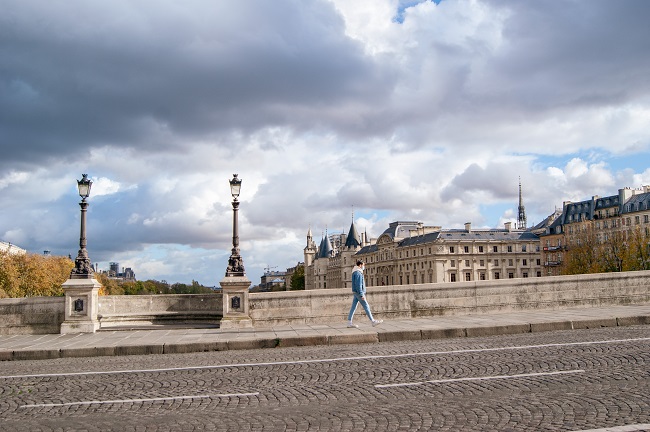How to be Parisian: Exploring Paris on Foot
Stephen finds transport strikes are a good excuse to explore the city on foot and indulge in a ‘sinful’ pâtisserie
In the colder months, striking transport workers often seem determined to make Parisians hike to work or camp overnight on railway station platforms. It’s what some might call a winter of discontent.
I could joke and say this is no surprise because Parisians are never content – which is what makes them Parisian. The other day, a French friend arrived for dinner with a warm, freshly-baked baguette. I thanked him profusely. “Shame it will be cool by the time we eat it,” he replied. Always look on the dark side. I blame Sartre.
Best foot forward
Parisians get even grumpier during the frequent transport strikes, but I quite enjoy them. For a start, France being a civilised country, the strikes are announced in advance so you have time to undo all the thrilling plans you had.
If you really want to move about, the RATP (Parisian transport authority) website always tells you which lines and buses will be working during strikes, and at what times. So your plans for the day might survive intact, as long as you’re willing to travel within kissing (or coughing) distance of another commuter’s face.
I prefer to cancel everything and go for walks. On a bright winter’s day, Paris is perfect for everything from the most leisurely stroll to the outright power walk. I’m pretty sure that power-walking was invented in either Paris or New York, two cities where people charge along pavements as if they’re being chased by debt collectors.
On a strike day, though, there’s no need to hurry. After cancelling all my plans, I have time to stroll and take in all the details of street life. The finer points of the Parisian landscape never fail to fascinate me, and I often wander around, even in my own neighbourhood, staring at everything from the new street art (the Canal de l’Ourcq in the 19th arrondissement is apparently one of Europe’s liveliest street-art venues) to the awe-inspiring array of complicated cakes in pâtisserie windows. Can I think of any reason not to go in and buy a chocolate religieuse – a tower of two chocolate-cream-filled chou pastry balls, one the ‘body’, one the ‘head’, with cream around the ‘waist’, the whole thing topped with chocolate icing? Its name is reason enough to eat one – how brilliantly cheeky of the French to call this most sinful of pastries a ‘nun’.

Fresh French chocolate religieuse © shutterstock
Strolling through the medieval Marais, I love looking at the street names, which hint at how the city has evolved through its long history. In the rue Debelleyme, for example, there is a barely legible carved stone plaque announcing “rue Neuve François”. It’s the pre-Revolution sign celebrating the king of the same name. However, you can only read the “François” because a blue-and-green enamel “rue Debelleyme” plaque has been nailed right on top.
Read the signs
This newer sign probably dates from the late 19th century, and is in honour of the chief of police who first introduced public buses to Paris in the 1830s. Both of these are placed at about four metres above pavement level, because back then, street names had to be legible to carriage drivers perched aloft in their seats.
Weirdly, at pedestrian eye level is another blue-and-green “rue Debelleyme” plaque which dates from the early 2000s when the city decided that its street names had to be lower down, but that it couldn’t be bothered to remove the old signs. So on this one wall you have three street names, two of which are correct. At least it’s democratic. This quirkiness in the details is what makes me content to be in Paris whether there’s a transport strike or not. Just strolling around is so much fun that I don’t need a monument, a museum or even a café to enjoy the city. Though I might occasionally indulge in a religieuse to enhance the mood.
Stephen Clarke’s latest novel is The Spy Who Inspired Me, a James Bond spoof set in Occupied France in 1944.
From France Today Magazine
Want to learn more about Paris street signs? Check out our regular Read the Signs feature
Lead photo credit : Walking in Paris © Jean-Baptiste D. on Unsplash
Share to: Facebook Twitter LinkedIn Email
More in French culture, Paris
Leave a reply
Your email address will not be published. Required fields are marked *






REPLY
REPLY